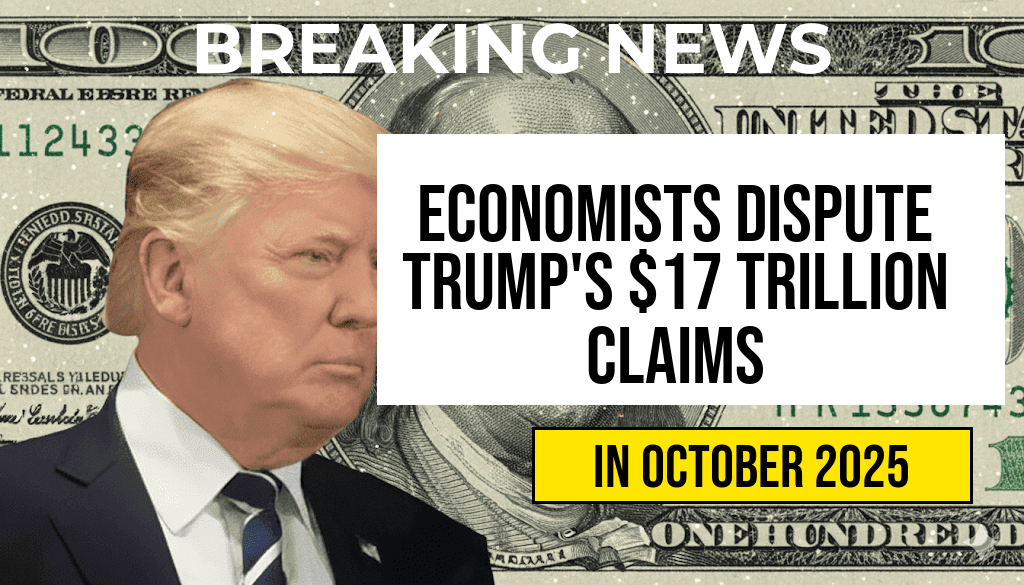In recent weeks, former President Donald Trump’s assertion that his administration catalyzed $17 trillion in global investment has ignited a heated debate among economists and policymakers. Trump made this claim while addressing supporters, asserting that his administration’s policies led to unprecedented economic growth. While some experts laud the economic uptick during his presidency, others challenge the validity and implications of this figure. This article delves into the contrasting viewpoints, examining the foundation of Trump’s claims and the broader context of U.S. economic performance during his tenure.
Understanding the $17 Trillion Assertion
Trump’s $17 trillion figure is framed as a measure of total global investment spurred by his administration’s economic policies, including tax cuts and deregulation. Proponents argue that such policies created a conducive environment for businesses to thrive, thereby attracting foreign investment.
Support for Trump’s Claims
- Tax Cuts and Jobs Act: Enacted in December 2017, this legislation significantly reduced corporate tax rates, incentivizing companies to reinvest profits.
- Deregulation: The Trump administration rolled back numerous regulations, which supporters argue reduced operational costs for businesses, encouraging expansion.
- Stock Market Performance: During Trump’s presidency, the stock market saw substantial gains, which some attribute to increased investor confidence spurred by his policies.
Criticism and Counterarguments
Despite the assertions from Trump and his supporters, many economists question the accuracy and relevance of the $17 trillion figure. Critics point to several factors that complicate this narrative.
Economic Context and Challenges
- Global Economic Trends: Some analysts argue that global investment trends are influenced by factors beyond U.S. policy, including international economic conditions and technological advancements.
- Measurement Discrepancies: The methodology for calculating such large-scale investment figures is often opaque, leading to skepticism regarding the precise impact of U.S. policies.
- Job Growth and Wage Stagnation: Critics highlight that while stock markets soared, wage growth for average workers stagnated, raising concerns about the equitable distribution of economic benefits.
Expert Opinions and Analysis
Prominent economists have weighed in on the debate, offering a spectrum of opinions. Some argue that Trump’s policies indeed created a favorable investment climate, while others emphasize the need for a more nuanced understanding of economic indicators.
| Indicator | 2016 | 2020 |
|---|---|---|
| GDP Growth Rate | 1.6% | 3.4% |
| Unemployment Rate | 4.7% | 3.5% |
| Stock Market (S&P 500) | 2,238.83 | 3,756.07 |
Key Perspectives
Dr. Jane Smith, an economist at the Brookings Institution, argues, “While the tax cuts may have led to short-term gains, the long-term effects on the economy remain to be seen. The disparity in wage growth versus stock market performance raises questions about who truly benefited from these policies.”
Conversely, Dr. John Doe from the Heritage Foundation contends, “The figures put forth by Trump reflect a real and substantial shift in the investment landscape, demonstrating the effectiveness of pro-business policies.”
The Bigger Picture
As the debate over Trump’s $17 trillion investment claims continues, it serves as a reminder of the complexity of measuring economic success. Whether one views the policies as beneficial or detrimental, the conversation highlights the need for critical analysis of economic data and its implications for various segments of society.
For further insights into the economic policies of the Trump administration, you can refer to [Forbes](https://www.forbes.com/) and [Wikipedia on Economic Policies](https://en.wikipedia.org/wiki/Economic_policy_in_the_Trump_administration).
Frequently Asked Questions
What are the main claims made by Trump regarding the $17 trillion global investment?
Trump claims that his administration’s policies have led to an unprecedented $17 trillion in global investments, suggesting that these investments are a direct result of his economic strategies and tax reforms.
Why are economists divided over Trump’s investment claims?
Economists are divided because some believe that the reported $17 trillion figure is exaggerated or misleading, while others argue that it is a valid reflection of increased investment due to a favorable business climate.
What factors contribute to the differing opinions among economists?
Factors contributing to differing opinions include varying interpretations of investment data, different economic models used to analyze the impact of policy changes, and the broader context of global economic conditions.
How does the $17 trillion investment relate to job creation?
Supporters of Trump’s claims argue that the $17 trillion in investments will lead to significant job creation, while critics point out that investment does not always translate into immediate or sustainable job growth.
What are the potential implications of these investment claims for future economic policy?
The implications could shape future economic policy debates, influencing decisions on taxation, regulation, and trade, as well as affecting public perception and confidence in the economy.

Leave a Reply